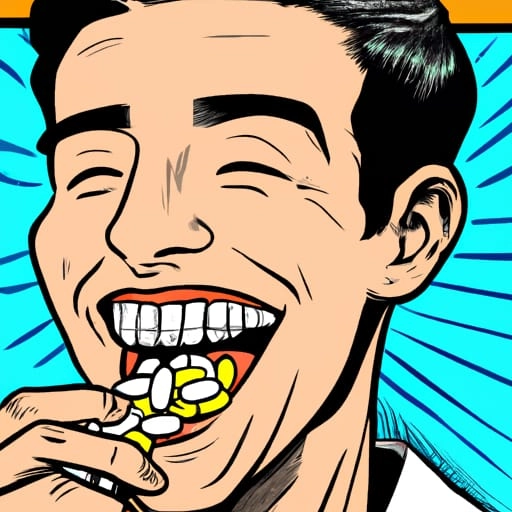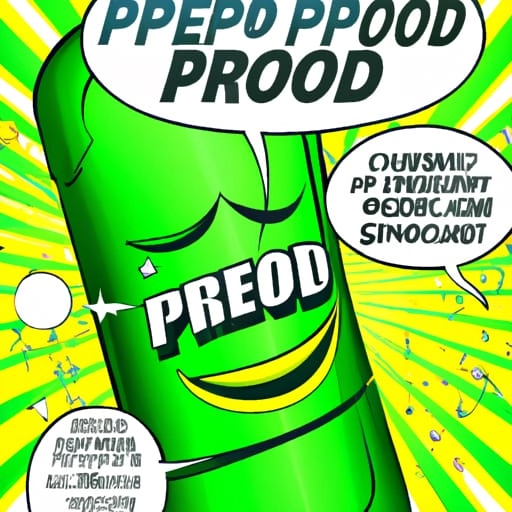Antidepressant Statistics 2023: Introduction
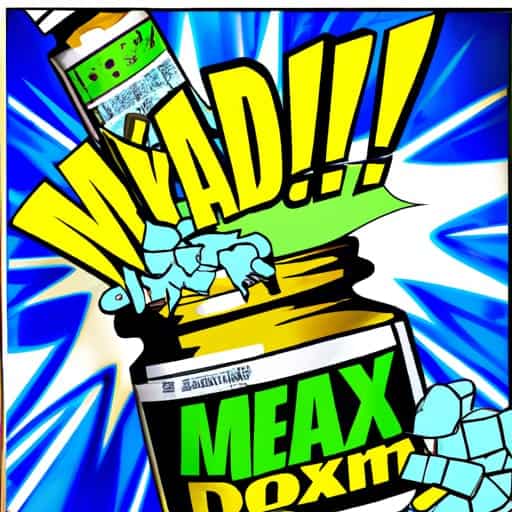
This list of antidepressant statistics sourced from various sources across the internet and frequently updated to reflect most recent data publicly available.
Last updated: Friday, 6 January 2023
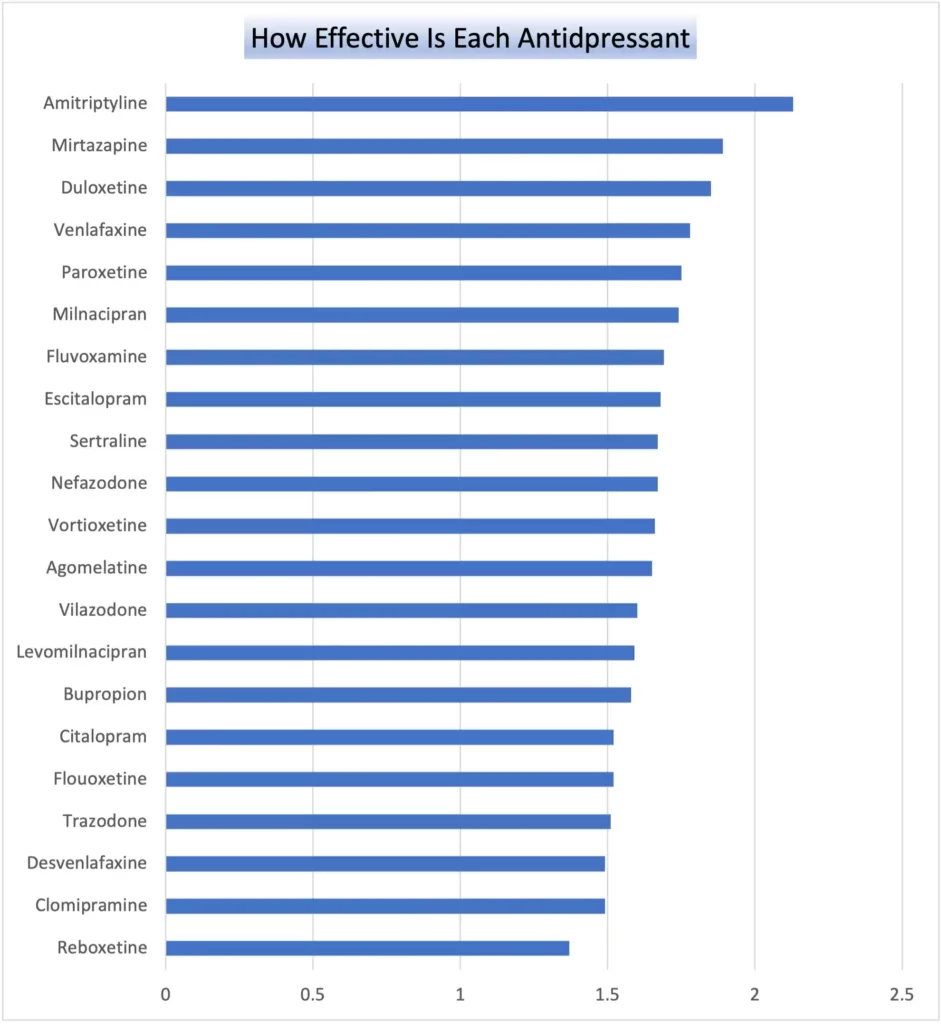
Usage of Antidepressants
- 12.7% The percentage of the U.S. population over age 12 who took antidepressant medication in the past month Source: National Center for Health Statistics 2017
- Prescription of antidepressants in the UK rose by 5.1% in 2021/22, compared with 2020/21. Source: The Pharmaceutical Journal
- The prescription in antidepressants in the UK has risen by 34.8% from 61.9 million items in 2015/2016 to 83.4 million items in 2021/22: Source: The Pharmaceutical Journal
- 8.32 million people in the UK were prescribed antidepressants in the UK in 2021/22: Source: The Pharmaceutical Journal
- 14.7% of the population of England was prescribed at least on course of antidepressants in 2021/22. Source: The Pharmaceutical Journal
- The most common antidepressants prescribed were Selective Serotonin Reuptake Inhibitors (SSRS). Source: The Pharmaceutical Journal
- 64% increase in people using antidepressants between 1999 and 2014 in the United States. In 1999, 7.7 percent of the population took the medication. Source: National Center for Health Statistics 2017
- Prescription of antidepressants in the UK has risen year on year for the last six years. Source: The Pharmaceutical Journal
- 19.1% of older adults (over age 60) who took antidepressants in the past month. Source: National Center for Health Statistics 2017
- The prescription of SSRIs in England increased by 63.3% from 2015 to 2022. Source: The Pharmaceutical Journal
- The prescription of non –SSRI antidepressants increased by 63.3% from 2015 to 2016. Source: The Pharmaceutical Journal

Antidepressants Usage by Age, Sex and Race
- In the USA, During 2015–2018, 13.2% of adults aged 18 and over used antidepressant medications in the past 30 days. Use was higher among women (17.7%) than men (8.4%).
- Antidepressant use increased with age, overall and in both sexes—use was highest among women aged 60 and over (24.3%). Source: Centers for Disease Control and Prevention
- Antidepressant use was higher among non-Hispanic white (16.6%) adults compared with non-Hispanic black (7.8%), Hispanic (6.5%), and non-Hispanic Asian (2.8%) adults. Source: Centers for Disease Control and Prevention
- From 2009–2010 through 2017–2018, the percentage of adults who used antidepressants increased among women, but not men. Source: Centers for Disease Control and Prevention
- Overall, the percentage of adults who took antidepressants in the past 30 days was lower among those with less than a high school (11.4%) or a high school (11.5%) education compared with those who attended college (14.3
- In the USE, the highest use of antidepressants in men is among those with college education (9.6%).
- Among women, in the USA, antidepressant use doesnot differ significantly by level of education. Source: Centers for Disease Control and Prevention.
- Overall, during the decade between 2009–2010 and 2017–2018, antidepressant use increased from 10.6% to 13.8%. Source: Centers for Disease Control and Prevention
- In the USA, a significant increasing trend was observed for women from 2009–2010 through 2017–2018 in antidepressant use during the past 30 days (from 13.8% to 18.6%), but not for men (from 7.1% to 8.7%). Source: Centers for Disease Control and Prevention
- The percentage of women taking antidepressant medication was higher than in men at all points over between 2009-2018. Source: Centers for Disease Control and Prevention
- In the USA, women are twice as likely as men to take antidepressant medication (16.5 percent compared with 8.6 percent). Women are more likely than men to take antidepressants in every age group. Source: National Center for Health Statistics 2017
- 16.5% of non-Hispanic white Americans take antidepressants, about three times as much as any other race or ethnic group. By comparison, 5.6 percent of non-Hispanic black Americans, 5 percent of Hispanic Americans, and 3.4 percent of non-Hispanic Asian-Americans took antidepressants in the past month. Source: National Center for Health Statistics 2017
- The highest rate of antidepressant use was among women, with 17.0% of women reporting use in 2017-2018, compared to 8.5% of men.
- Antidepressant use was more common among non-Hispanic white adults (13.8%) than among non-Hispanic black adults (10.4%) or Hispanic adults (6.4%).
- The use of antidepressants was highest among adults aged 40-59, with 17.1% reporting use in 2017-2018.
- In the UK, not everyone with mental health conditions takes antidepressants, but of those who do, the highest using region is Northern Ireland at 93%, with North West England next on 90%. The lowest-using region is Wales at 68%. Source: Chemist 4U
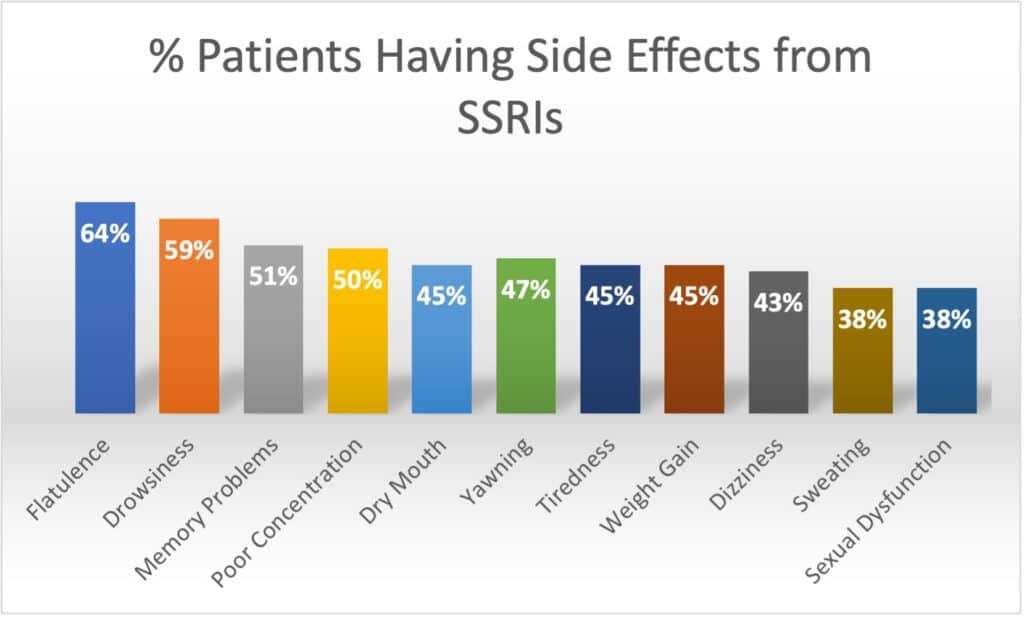
Miscellaneous Facts About Antidepressants
- In 2020, the FDA approved the use of the antidepressant ketamine for the treatment of depression in adults. It was approved in the UK in 2019: Source: Maudsley Prescribing Guidelines, 14th edn, p 369
- The antidepressants most likely to cause weight gain are amitryptiline and nortriptyline. Source: Psycom, 2022
- The antidepressants least likely to cause weight gain are fluoxetine and buproprion. Source: Psycom, 2022
- Ketamine, as the nasal spray Spravato, was approved by the US Food and Drug Administration for treatment-resistent depression in 2019. Source FDA
- The most commonly used type of antidepressant in the United States is selective serotonin reuptake inhibitors (SSRIs), with 69.6% of adults taking this type of medication.
- Fluoxetine takes the longest to get out of your body, with a half-life of upt to 144 hours (so up to 12 days to be completely eliminated). Source. Mind UK
- Agomelatine is gotten rid of quickest, and is all gone by 4 hours after taking it if not earlier. (This can lead to worse withdrawal)
- Antidepressant tablets and capsules often contain lactose and/or gelatine and so might not be not suitable for vegetarians, vegans or lactose-intolerant people. Source Mind UK
- A survey in 1997 found that 74% of people thought antidepressants were addictive. (They are not physically addictive) Source: British Journal of Psychiatry.
- Clomipramine is the most commonly used antidepressant intravenously. Source: Maudsley Prescribing Guidelines, 14th edn, p 367
- 55% of people diagnosed with depression recover completely, and a further 35% are well most of the time. Source: Maudsley Prescribing Guidelines, 14th edn, p 375
- 80.3% of people being treated for depression with antidepressants had sexual dysfunction, a known side-effect. Source: Journal of Psychosexual Health August 2020
- The prescribing of pregabalin for anxiety has increased 700% in the 10 years from 2011 to 2012: Source: Maudsley Prescribing Guidelines, 14th edn, p 441
- The worst antidepressants for causing sexual dysfunction seem to be paroxetine and escitalopram. Source: Drug and Therapeutics Service, Adelaide. 2020
- The antidepressants with the lowest risk of causing sexual dysfunction were Agomelatine, Buproprion, Mirtazapine, Reboxetine, Vortioxetine. Source: Drug and Therapeutics Service, Adelaide. 2020
- Patients treated with antidepressants for fibromyalgia are 400% more likely to report improvement in fibromyalgia symptoms that those who were not treated. Source: Journal of General Internal Medicine 2000.
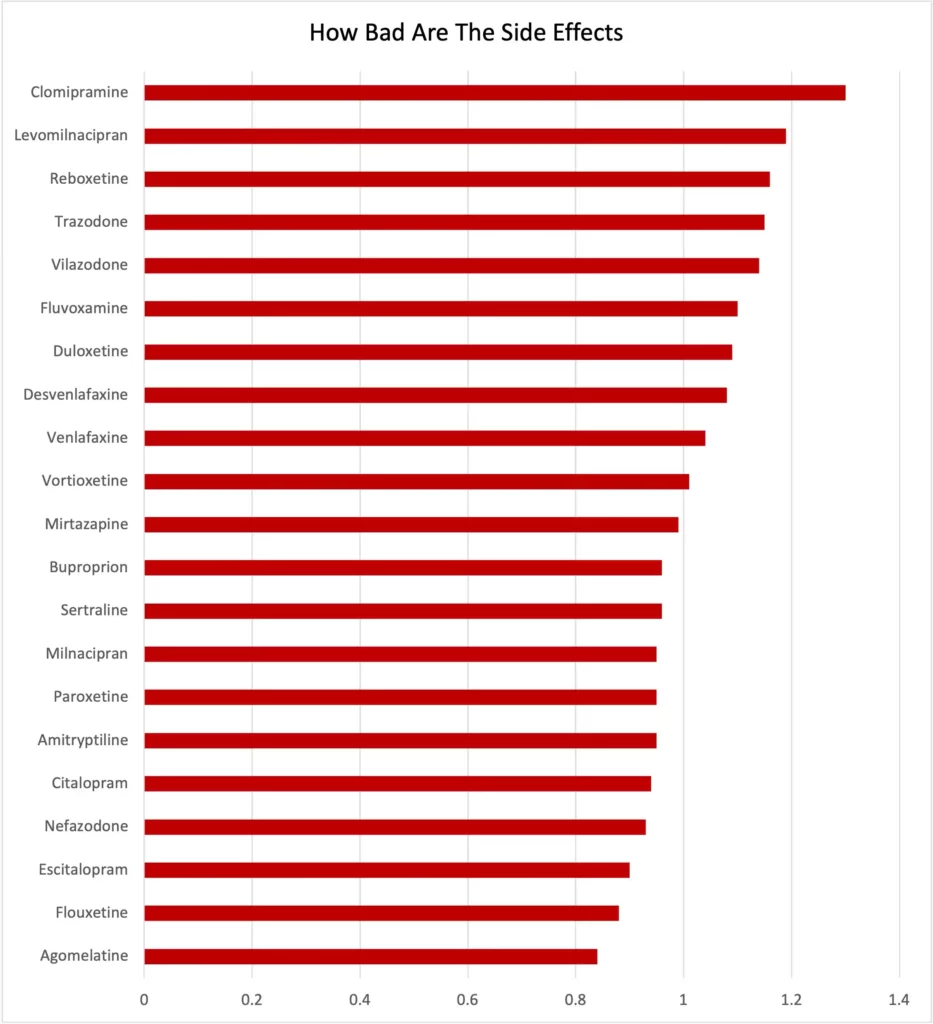
Are Antidepressant Misused?
- 15% of people are taking antidepressants that were not prescribed to them in 2020. Source: Chemist 4U
- 31% of people who feel they have a mental health condition have not been officially diagnosed as such by a doctor. Source: Chemist 4U
- The 18-24 age group contains the largest number of people who used antidepressants that weren’t originally prescribed to them.Source: Chemist 4U
- A study published in the Journal of Clinical Psychiatry found that more than 50% of people who take antidepressants do not have a mental health disorder.
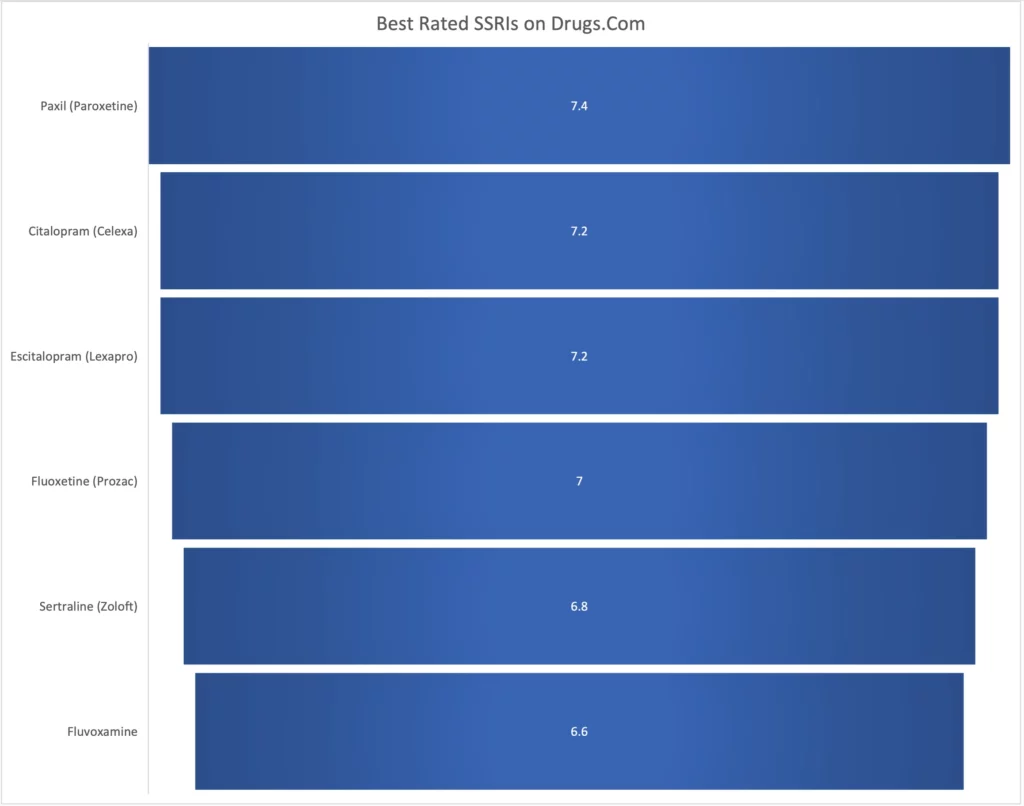
Are Antidepressants Effective?
- Only 30% of people who take antidepressants think they work. Source: Chemist 4U
- Of all respondents aged 55+ who used antidepressants, only 25% said they were very effective, with almost 30% saying they were not effective at all. Source: Chemist 4U
- 40% of 18-24 year olds who have mental health conditions in the UK have opted for herbal remedies instead of medication. Source: Chemist 4U
- Without antidepressants: About 20 to 40 out of 100 people who took a placebo noticed an improvement in their symptoms within six to eight weeks. Source: National Library of Medicine. Source: National Library of Medicine
- With antidepressants: About 40 to 60 out of 100 people who took an antidepressant noticed an improvement in their symptoms within six to eight weeks. Source: National Library of Medicine
- A 2018 metanalysis found that seven people would be needed to be treated with antidepressants for panic disorder in order for one to feel any benefit. Source: Cochrane Library 2023
- A 2004 study looked at nine studies about the effectiveness of antidepressants compared with placebo, and found that only two of them showed consistent and statistically significant benefit from taking antidepressants for depression. Source: Cochrane Library 2023
- A 2018 Metanalysis of the effectiveness of antidepressants in depression found that amitriptyline was the most effective antidepressant. Source: The Lancet
- A 2018 Metanalysis of the effectiveness of antidepressants in depression found that agomelatine was the was the best tolerated antidepressant. Source: The Lancet
- A 2018 Metanalysis of the effectiveness of antidepressants in depression found that reboxetine was the least effective antidepressant. Source: The Lancet
- A 2018 Metanalysis of the effectiveness of antidepressants in depression found that clomipramine was the worst tolerated antidepressant. Source: The Lancet
- 63% of people taking paroxetine say it is a positive experience. Source: Drugs.com
- 62% of people taking escitalopram say it is a positive experience Source: Drugs.com
- 60% of people taking fluoxetine say it is a positive experience. Source: Drugs.com
- 83% of people taking lisdexamfetamine for depression reported it was a positive experience. This is the highest rating of any medication on drugs.com Note: lisdexamfetamine (a form of amphetamine) is not licensed for depression. Source: Drugs.com
- 58% of people taking sertraline say it is a positive experience. Source: Drugs.com
- In the USA in 2020, about 0.7% of people aged 12 or older, or about 1.9 million people, said they had used cocaine in the past year. This is lower than it was in previous years. Source: Substance Abuse and Mental Health Services Administration
- Unlike lisdexamfetamine, we have no official measure of how many people say taking cocaine is a positive experience. It may be around 83%.
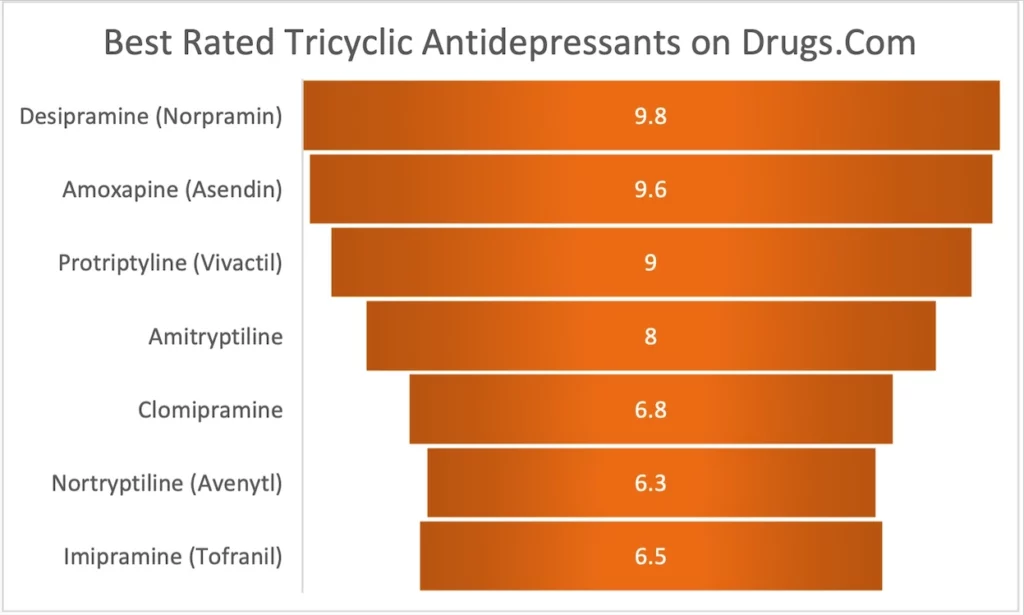
Antidepressants and Children
- The number of children being prescribed antidepressants in England increased by 9.2% over the year between 2020/21 and 2021/22. Source: The Pharmaceutical Journal
- The number of antidepressants being prescribed to children aged from 5-12 years old increased by 40% between 2015-2021. Source: The Pharmaceutical Journal
- The number of antidepressants being prescribed to children aged from 5-12 years old increased by 40% between 2015-2021. Source: The Pharmaceutical Journal
- A study published in the journal Pediatrics found that the use of antidepressants among children and adolescents in the United States increased by almost 300% between 1988 and 2002.
- In 2019, 21,297 prescriptions for antidepressants were issued to children under 12 years old. Source: Chemist 4U
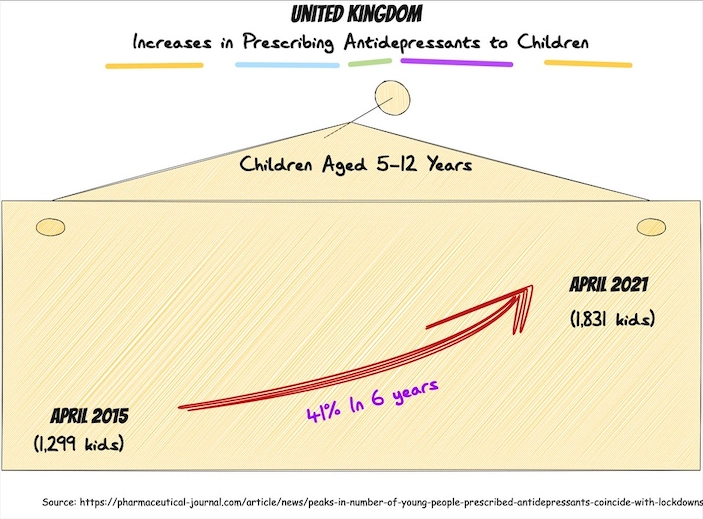
Antidepressants and Poverty
- People in poorer parts of England are three times more likely to be prescribed antipsychotics than people in wealthy areas. Source: The Pharmaceutical Journal
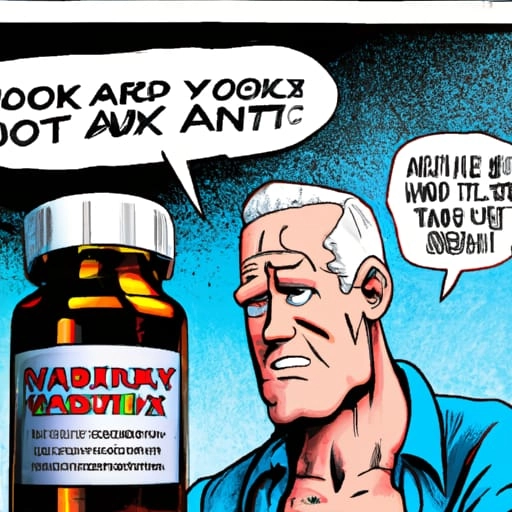
The Cost of Antidepressants
- Over the years 2016-2018, the NHS paid £672.5 million for antidepressants
- Source: Chemist 4U
- The prescription of SSRIs in England in 2021/22 was 45 million items, while the prescription of other types of antidepressant drugs was 20.4 million in 2021/22
- Source: The Pharmaceutical Journal
- In 2019, it was estimated that the total sales of antidepressants in the United States were approximately $15 billion.
Antidepressants Across The World
- Iceland is the country that uses most antidepressants per head of population. Source OECD Health Statistics 2022
- Australia is the second highest consumer of antidepressants after Iceland per head of population. OECD Health Statistics 2022
- The United Kingdom ranks as fourth in the world for consumption of antidepressants per head of population. OECD Health Statistics 2022
- Latvia is the lowest consumer of antidepressants in the world per head of population. OECD Health Statistics 2022

Antidepressants and Suicide
It is also important to note that depression itself is a risk factor for suicide, and untreated depression can be a serious and life-threatening condition.
“The most effective way to prevent suicidal thoughts and acts is to treat depression”
The Maudsley Prescribing Guidelines in Psychiatry, 14th edn, p. 309
If you or someone you know is experiencing thoughts of suicide, it is important to seek help immediately by contacting a mental health professional or by calling the National Suicide Prevention Lifeline at 1-800-273-TALK (8255).
In the UK, Samaritans: a confidential support service for people experiencing feelings of distress or despair. You can contact Samaritans by phone, email, or in person. Phone: 116 123 (this number is free to call)
NHS 111: a 24/7 phone service that provides medical advice and information. Phone: 111
It is important to remember that you are not alone and that there is help available. If you or someone you know is in crisis, don’t hesitate to reach out for support.
- A study published in the journal JAMA Psychiatry found that the use of antidepressants was associated with an increased risk of suicide among adults aged 18-64, but not among those aged 65 and older.
- A 2010 study found that amitriptyline caused more deaths by suicide than any other antidepressant. Source: The British Journal of Psychiatry
- A 2010 study found that clomipramine was the second most lethal antidepressant in overdose as measured by death rate per 100,000. Source: The British Journal of Psychiatry
- A 2010 study found that sertraline was the least likely of the antidepressants to cause death when taken in a self-poisoning incident. Source: The British Journal of Psychiatry
- A 2010 study found that paroxetine was the second safest antidepressant if a person self-poisoned either on purpose or by accident. Source: The British Journal of Psychiatry
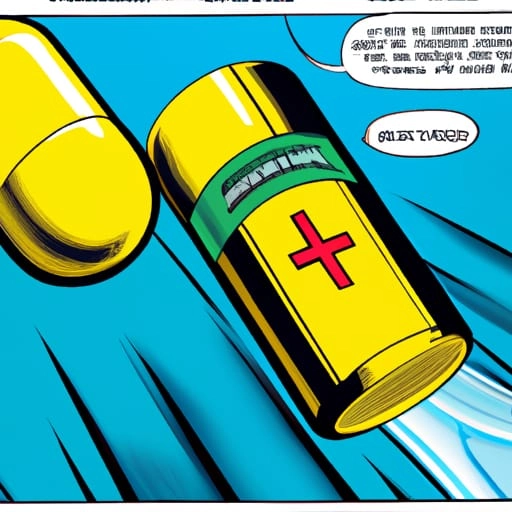
Related Articles
5 Most Effective Antidepressants for Anxiety and Depression (and 3 you should avoid)

